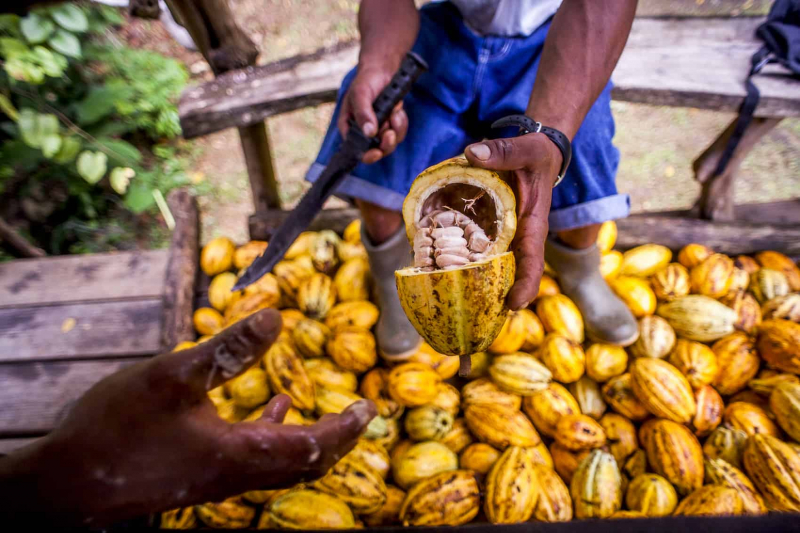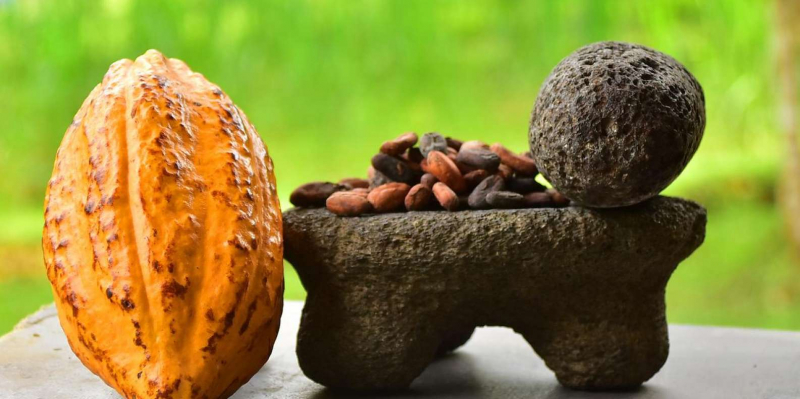Top 7 Most Popular Costa Rican Fruits
Costa Rica is a lush country that is dense with vegetation. In Costa Rican supermarkets and farmer’s markets, you’ll find an array of tropical fruits that are ... read more...a feast for the eyes as well as the taste buds. If you’re planning a trip to Costa Rica and you love fruit, you’re likely to find fruits you’ve never tried and possibly have never heard of before. Below are the most popular Costa Rican fruits, let's find out!
-
Costa Rica is the world's leading pineapple exporter, providing more than 47% of all exported pineapples. Although pineapples are frequently associated with Hawaii, Costa Rica actually exports pineapples to Hawaii. Every pineapple you eat has been carefully and patiently grown over the course of 20 to 26 months, and each plant only yields one fruit. You won't believe how delicious Costa Rican pineapples taste if you like pineapple. In Costa Rica, you can also try the Pinkglow™ pineapple — a genetic variant that has been carefully curated over time. As the name suggests, the flesh of this pineapple is pink. This delicacy is exported to the finest fruit markets at a premium that signifies just how special it is.
Pineapple is consumed in a variety of ways in Costa Rica. On its own, combined with other tropical fruits, or juices, the fruit is delicious. Fruit smoothies and alcoholic beverages like the Pura Vida, which takes its name from the greeting used by Costa Ricans, benefit from the tasty addition of pineapple juice. You can find fresh pineapple pieces in a Colada Fresca, a variation on the Pia Colada. Whatever way you choose to eat it, pineapple has a number of outstanding health advantages, including the ability to reduce infection time and strengthen your bones.

iStock 
Aprifel -
Maracuyá and granadilla are the two types of passion fruit that can be found in Costa Rica. By examining the exterior, you can immediately distinguish between these fruits. When ripe, a maracuyá's exterior is purplish-green and wrinkled, whereas a granadilla has an orange shell that is tougher. Granadillas and maracuyás are almost the same sizes, but granadillas are substantially lighter.
Both of these passion fruits have black seeds and a gelled pulp. The fruit inside is the part that can be eaten. The pulp of a granadilla is almost clear, whereas the pulp of a maracuyá is a bright orange color. Passion fruit is wonderful on its own or added to smoothies, yogurt, and desserts because of its sweet and tart flavor. Puncture the fruit's exterior to reveal the juicy seed filling, which is the simplest way to consume this fruit. To prepare a tasty, smooth juice, many Costa Ricans mix and sieve the fruit inside. Since passion fruit is high in vitamins, antioxidants, and fiber, it is a fantastic food source.

iStock 
Candide -
The primary export of Costa Rica is bananas. Numerous people are employed in Costa Rica's rural areas in the banana business, which is a crucial component of the nation's economy. Although bananas are a widely consumed fruit in the United States and other nations, many people are accustomed to importing bananas. Locally cultivated bananas are available in Costa Rica.
The plants that produce bananas are actually herbs, not trees. Banana fruit clusters are produced by these plants. The individual bananas are referred to as fingers, and the clusters are known as hands. Bananas are simple to peel and delicious on their own, but you can also add banana slices to your breakfast or smoothie to give it a sweeter, creamier flavor. Plantains, a cousin to yellow bananas, are often sliced, fried, and served as a side dish in Costa Rica. While bananas include a variety of minerals, their high potassium content is what makes them so popular. This mineral supports numerous bodily functions, such as maintaining fluid balance, controlling the flow of substances into and out of cells, and ensuring a regular heartbeat.

Tico Travel 
Q COSTA RICA -
The Costa Rican guava, or sour guava, is called a cas. The sour guava is a bit different from a guayaba, or standard guava, and it’s a favorite in Costa Rica. Sour guavas are small fruits, averaging 3 to 5 centimeters in diameter, and have a round, oval, to ovate shape with lumpy, curved edges. The skin is semi-smooth, taut, and thin, ripening from green to yellow-green with maturity, and there may be remnants of small sepals at the apex of the fruit.
Cas is sour and has a flavor akin to citrus fruits like lemon or white grapefruit, even when it is fully mature. Locals frequently consume cas without removing this little protein gem, which is typically found inside a complete cas. Fortunately, there are no worms to worry about when cas juice is used to make drinks like smoothies and tropical cocktails. Also, when you order breakfast at a Costa Rican restaurant, you’re likely to get a glass of fresh cas juice. The fruit is also edible by itself. In Costa Rica, underripe cas are offered for sale as a snack by street sellers. Vitamin C is abundant in sour guava, making it a nutritious and tantalizingly tangy delight.

Specialty Produce 
Specialty Produce -
The pejibaye, also known as the peach palm fruit, is incredibly well-liked in Costa Rica and special since it's utilized in both sweet and savory dishes. The top of a particular species of palm tree endemic to Central and South America is covered in clusters of peach-colored fruits. Pejibayes are tiny, round fruits that resemble strawberries in shape by coming to a point at the bottom. Their skin can be yellow or red, and their interior meat is orange.
Peach palm fruits are boiled in salted water in Costa Rica until they are soft. Peach palm fruits can be served cooked with sour cream or mayonnaise. Alternatively, they can be used in recipes for anything from soup to cakes and pastries. Every year, the hamlet of Tucurrique de Cartago hosts an annual Pejibaye Festival. Here, you can try pejibaye included in all sorts of local foods. The fruit has a sweet potato-like flavor. The fruits of the peach palm are rich in important elements like calcium, carotene, phosphorus, and ascorbic acid.

Adobe Stock 
Adobe Stock -
Mangos are native to India, but since being brought to the Americas in the 18th century, they have become a popular fruit in many areas of the world. Mango seeds traveled with humans from Asia to the Middle East, East Africa, and South America beginning around 300 or 400 A.D. They are widely available and reasonably priced in Costa Rica because they are grown there in great abundance.
Mangos, which are smaller than baseballs, are also available, as are mangas, which are rectangular in shape and more closely resemble softballs in size. Mangoes typically have yellow, red, and green hues in their peel. The internal flesh is a bright golden hue. When you press a mango, you should be able to make an indentation; this is a sign that the fruit is ripe. Additionally, you should detect the mouthwatering mango aroma on the skin. Perhaps you've tried mango in juices, salsas, or chutneys. Sliced unripe mangos paired with salt and a lime wedge are a popular local snack in Costa Rica. This crunchy, salty snack is particularly reviving. Mangoes are more than just tasty. They also include a lot of vitamins, such as vitamins A, C, and D.

Rove.me 
Rove.me -
Cacao beans, the primary component of chocolate, are surely familiar to you, yet they aren't actually beans. The fruit of the Theobroma cacao tree, which is shaped like a pod, contains cacao beans, which are actually seeds. Each pod contains dozens of seeds as well as tasty pulp. Because they were once revered as sacred in Central America, cacao beans continue to be important to Costa Rican culture and commerce.
Chocolate is one of the tastiest forms of cacao to consume. If you happen to be in Costa Rica when the weather is a little cooler, think about tasting a hot chocolate since chocolate was first created into a liquid before becoming a solid candy. Cacao fruit is also edible in its unprocessed state. Pop the seeds into your mouth and eat the sweet pulp of the seed. The pulp has a unique and complex taste with notes of citrus and other tropical flavors. Given its abundance in flavanols, an antioxidant class of antioxidants, raw cacao is regarded as a superfood. Flavanol consumption may reduce your risk of heart disease, enhance digestion, reduce stress, enhance cognition, and decrease your risk of type 2 diabetes.

Tico Times 
GetYourGuide




























